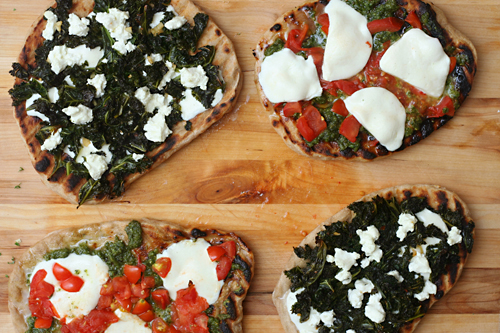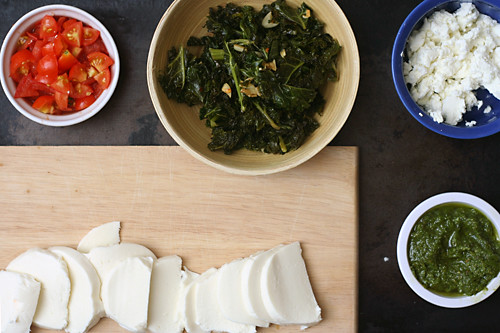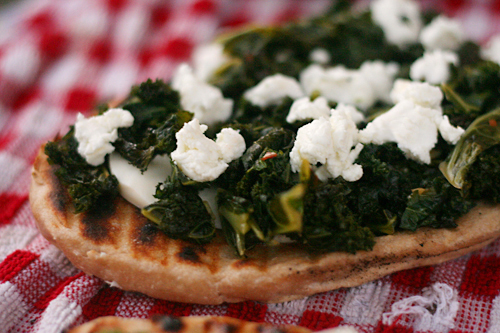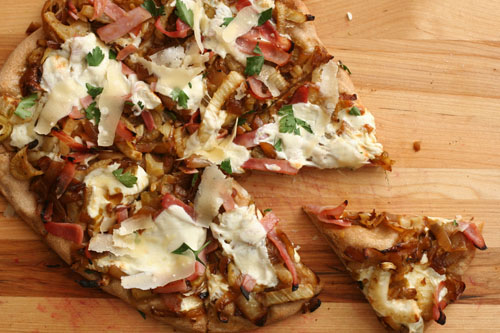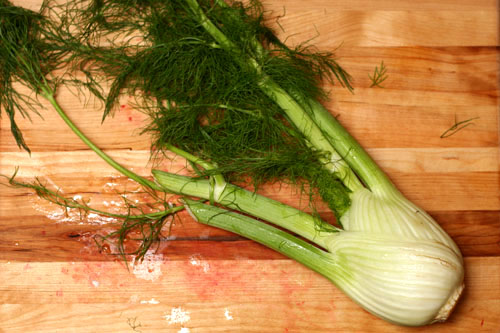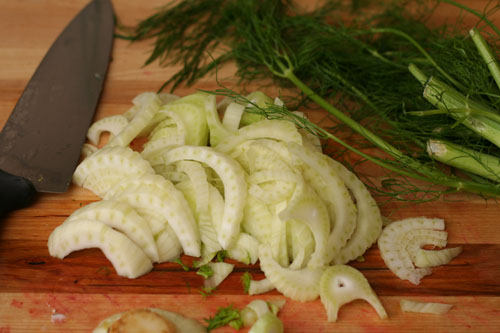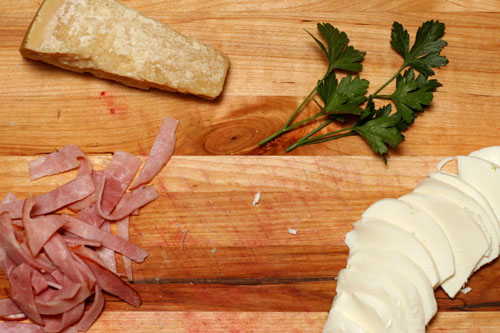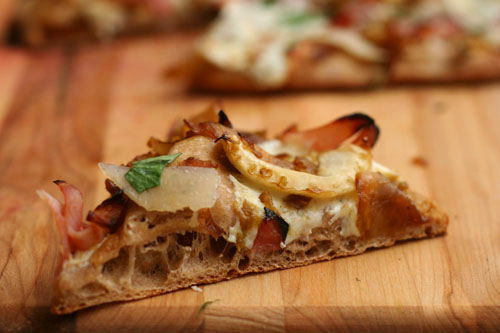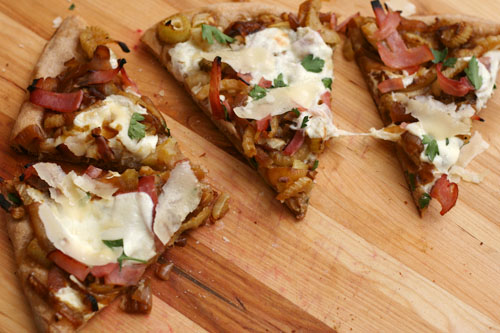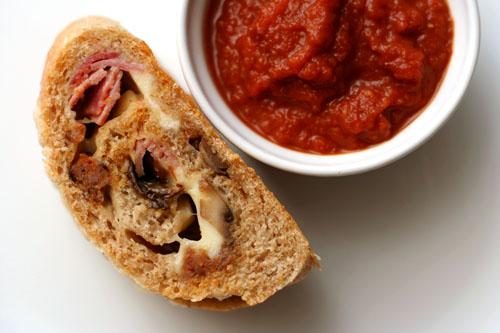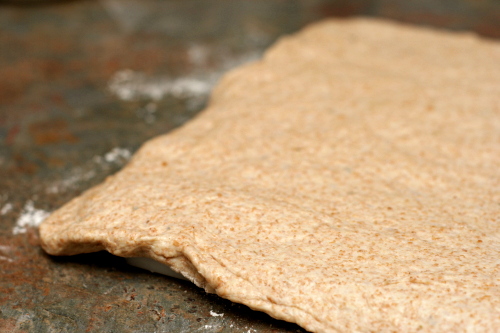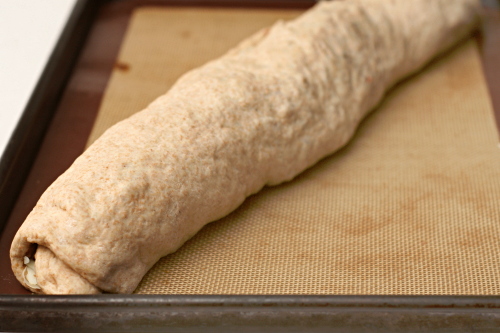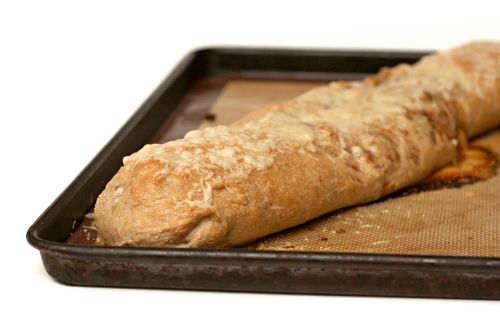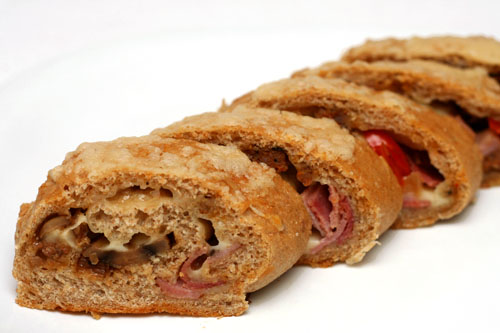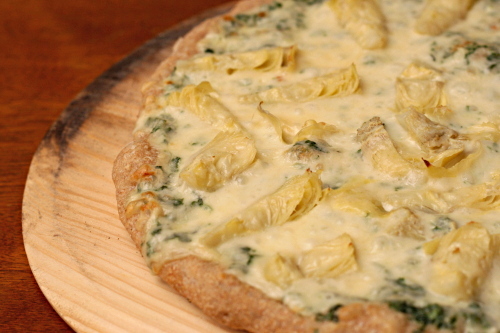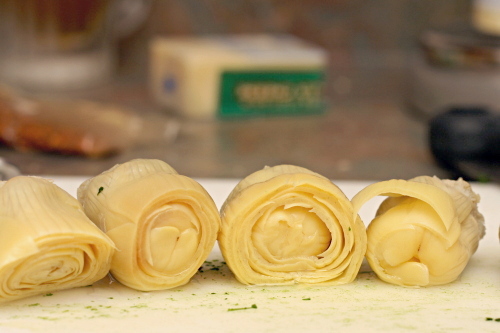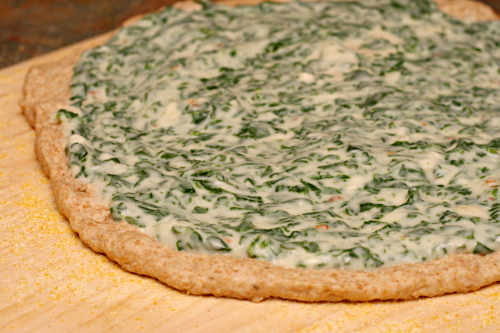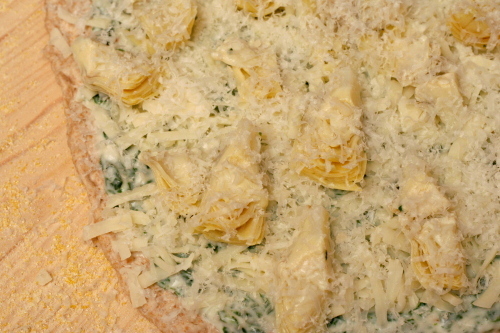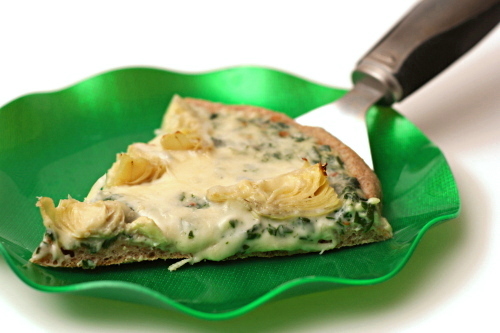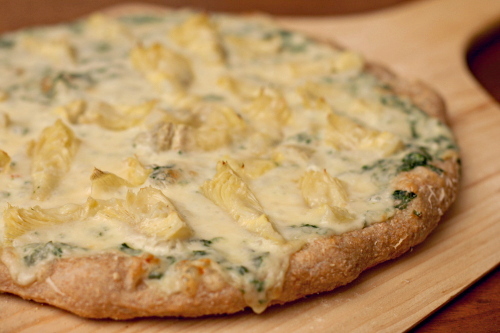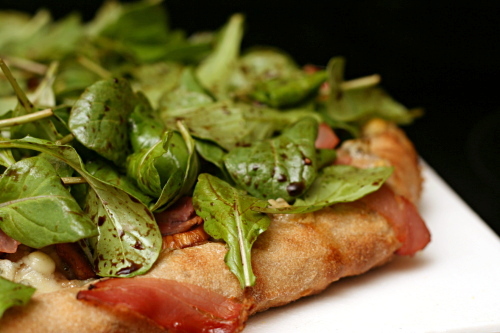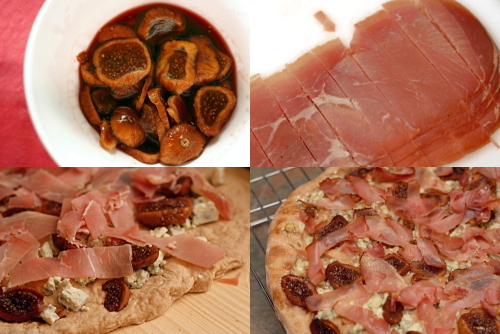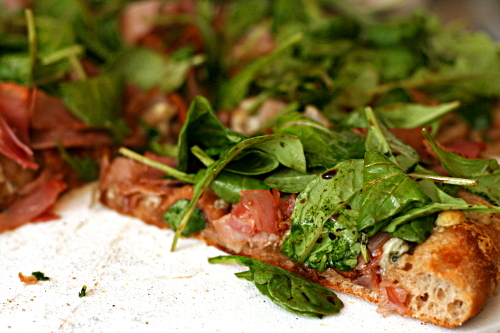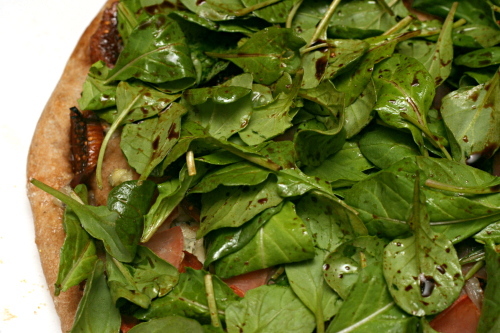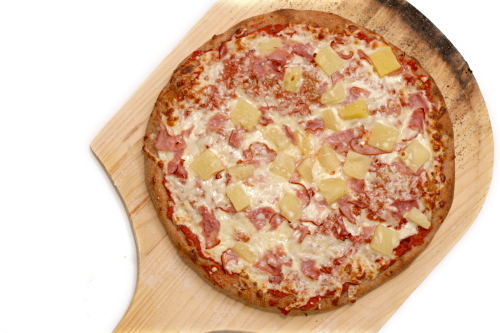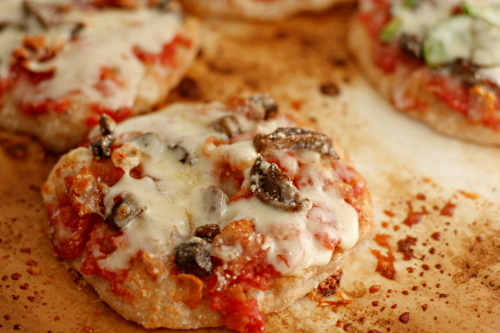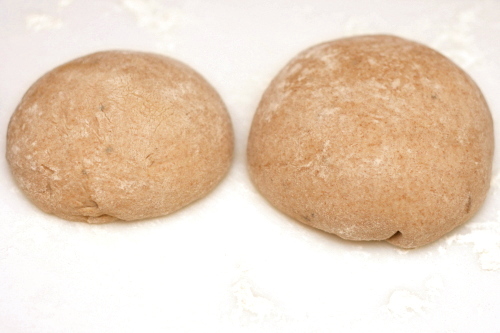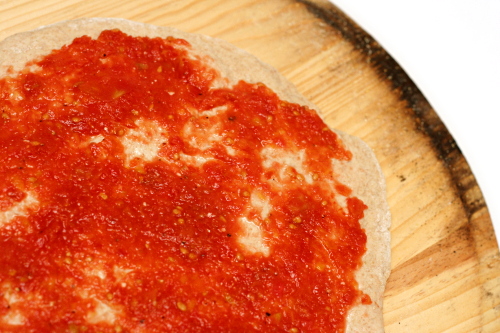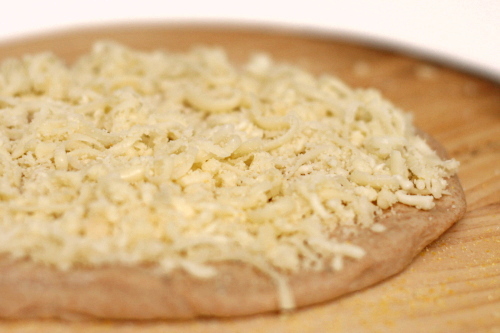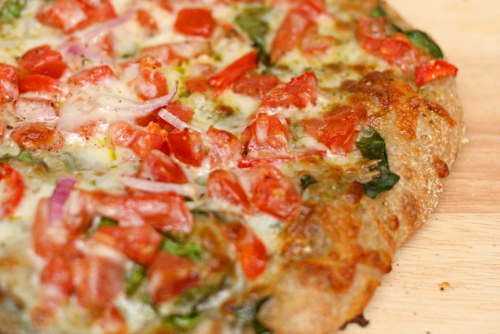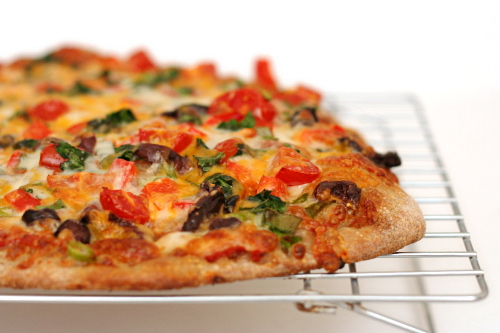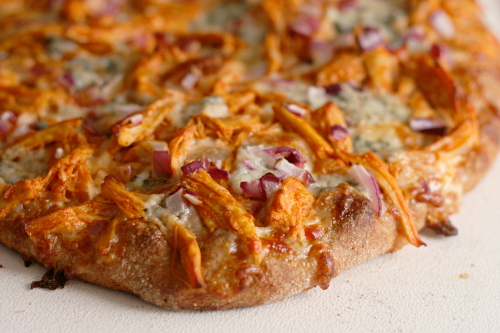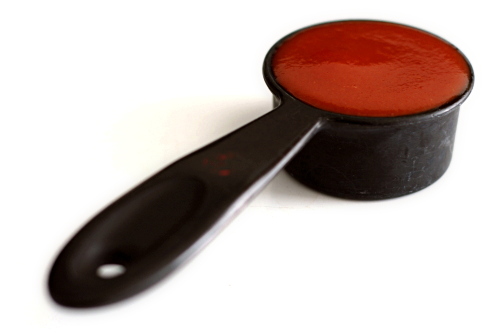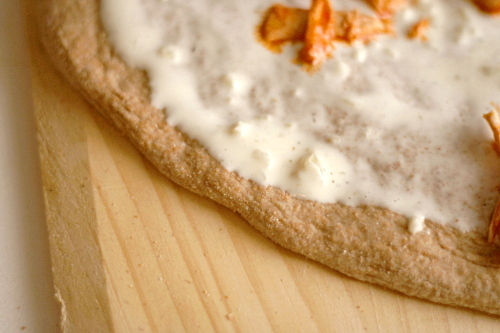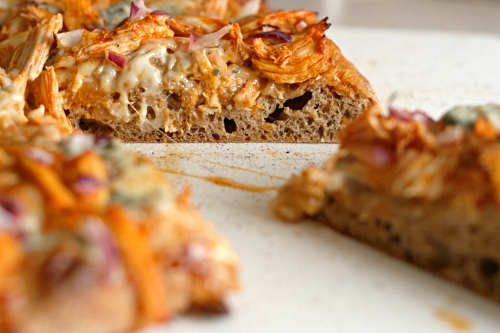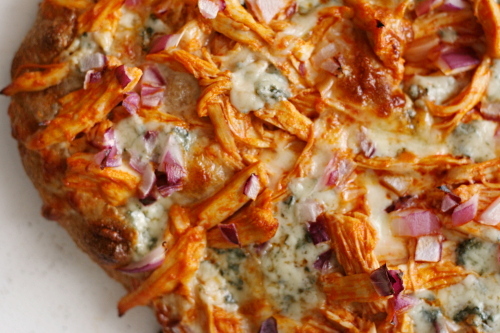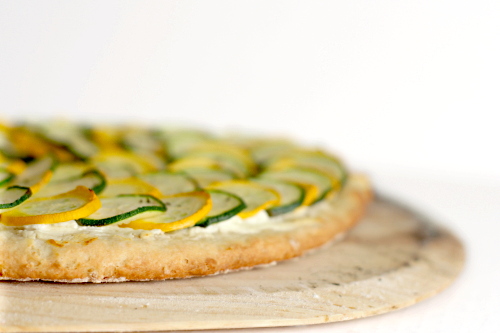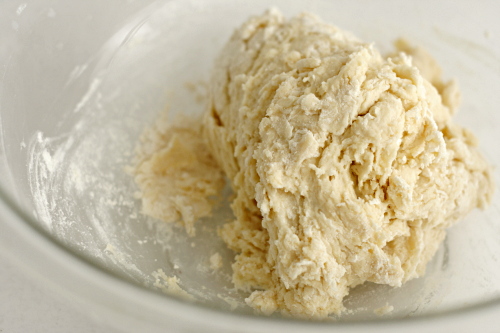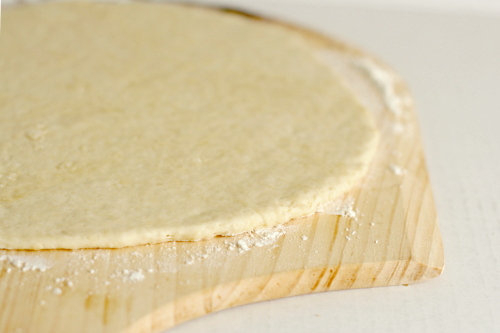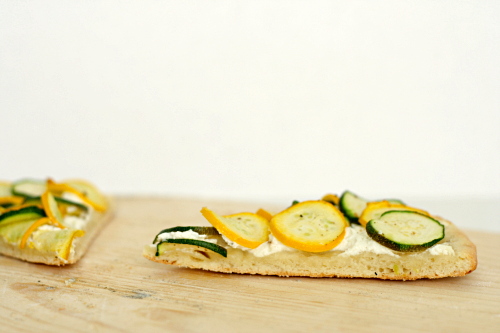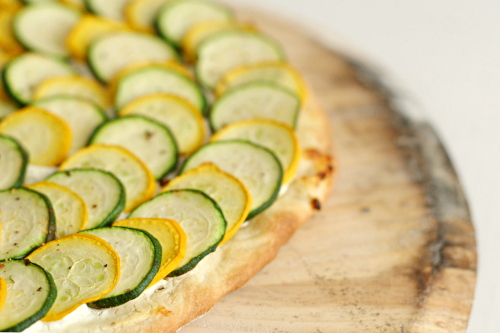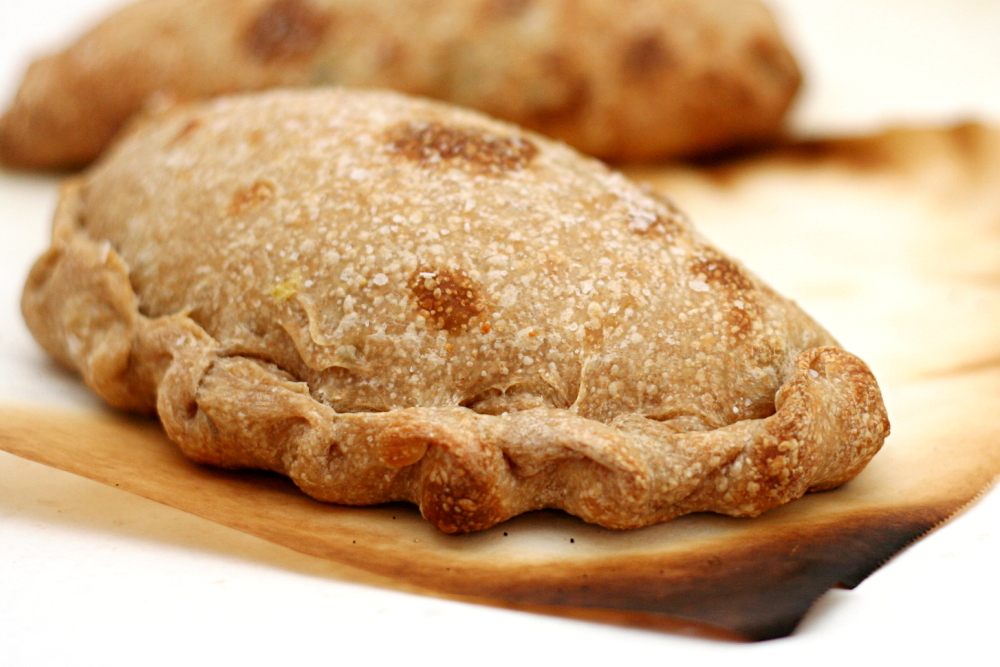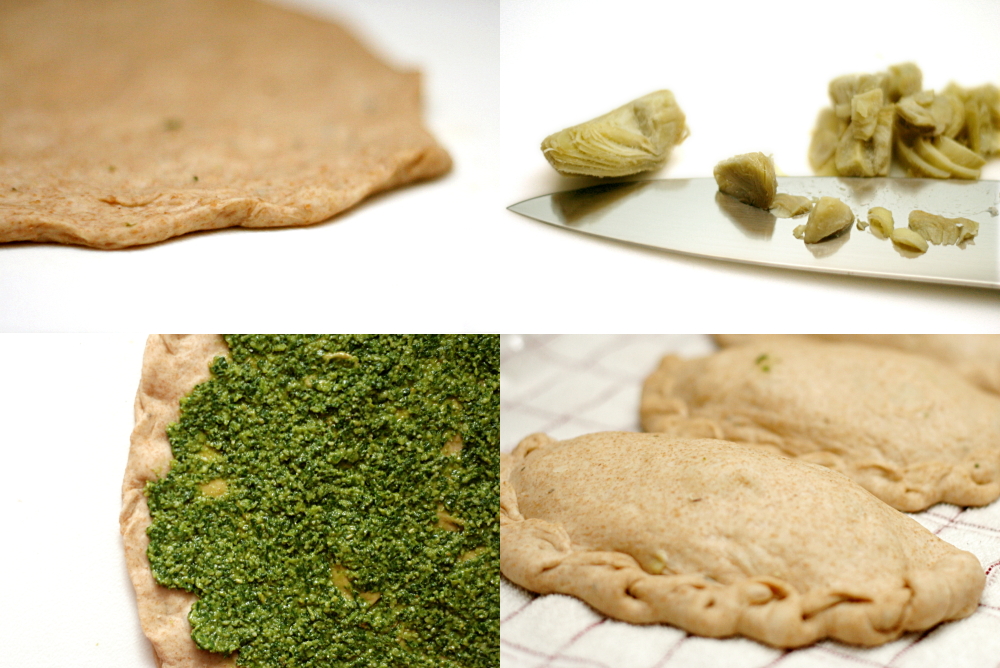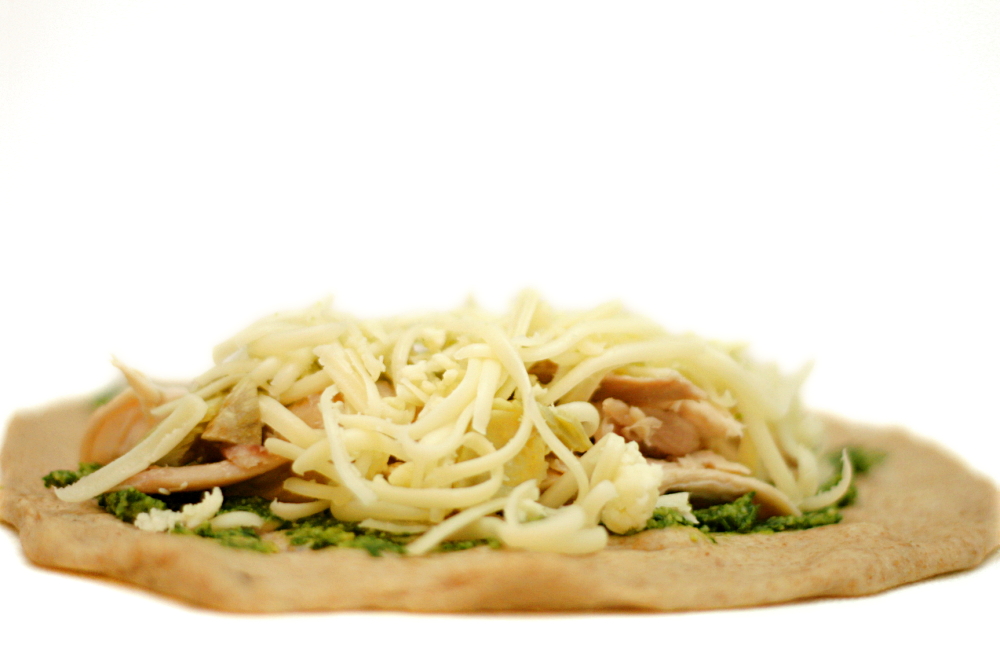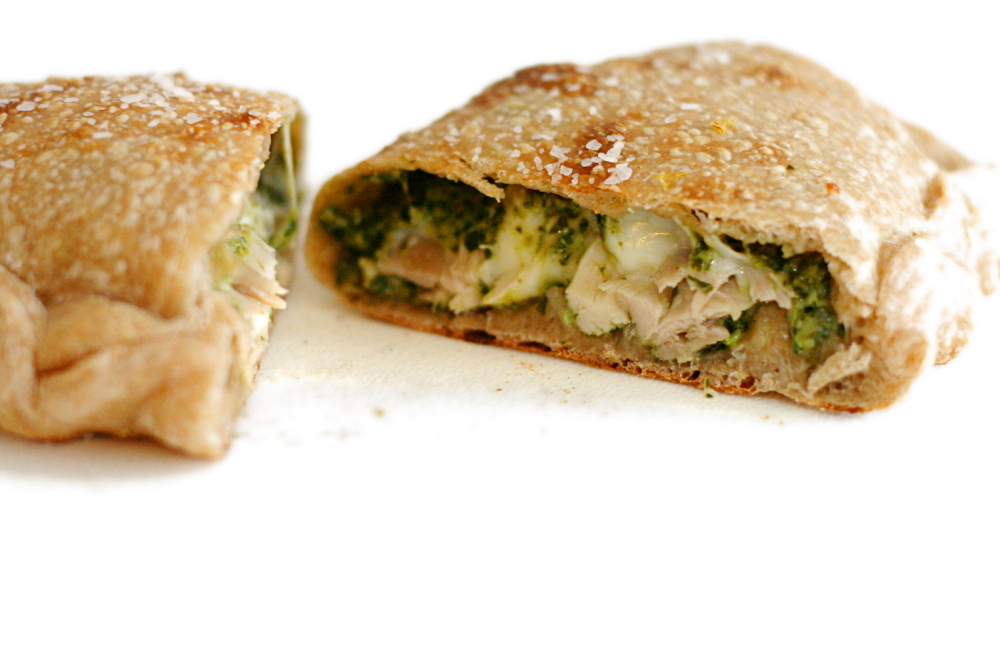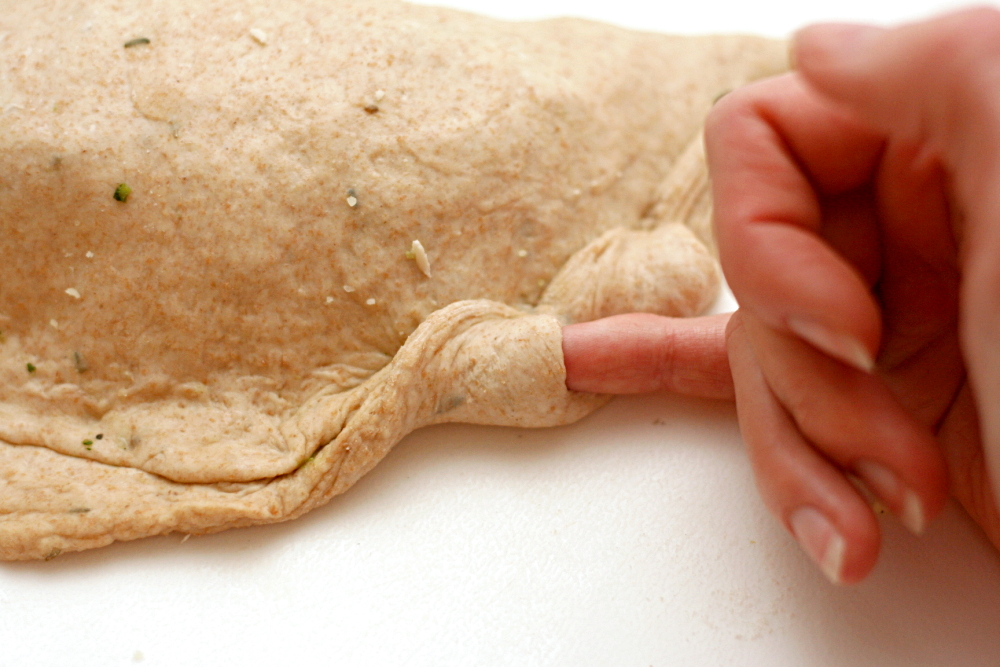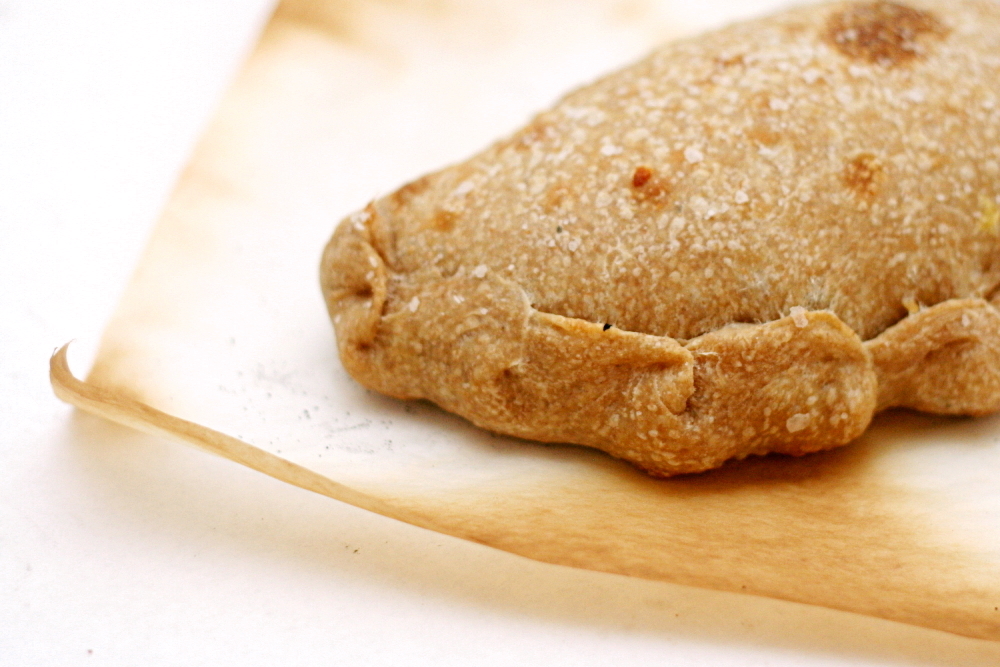When it comes to grilled pizza, I’m a slow learner. We’ve made crusts so burned that we had to chip flakes of blackened bread off before we could eat it. We’ve also made pizza with doughy undercooked crusts and with unmelted cheese and raw toppings. About the only problem we haven’t had is the dough sticking to the grate, so at least there’s that.
This was my most successful attempt at grilling pizza so far, but even so, it’ll be a while before there’s any kind of grilled pizza tutorial from me. Instead, I will provide my standard foolproof oven method for a very non-standard pizza. My ears perk up whenever anyone mentions goat cheese, which is no surprise since it’s so creamy and tangy. But I like kale almost as much, which is maybe more surprising.
This is the first time I’ve eaten them together, but it’s a combination that makes good sense, because the tart goat cheese will balance the earthy kale. With crushed red pepper spicing things up and mozzarella holding everything together, this was one different and delicious pizza – with charcoal flavor or not. It was almost as good as the pizza margherita we made to go with it, and that’s really saying something.
One year ago: Vanilla Bean Cupcakes
Two years ago: Sourdough Bagels
Three years ago: Salmon Clubs with Avocado Butter
Printer Friendly Recipe
Pizza Bianca with Goat Cheese and Greens (adapted from Love and Olive Oil)
1 pound pizza dough (½ of this recipe), fully risen and at room temperature
2 teaspoons olive oil
3 cloves garlic, minced
¼ teaspoon crushed red pepper
1 bunch kale, washed, stems removed
salt
4 ounces (½ cup) part-skim mozzarella, shredded
4 ounces goat cheese, crumbled
1. Place a pizza stone on the bottom rack of the oven and preheat the oven to 500ºF. Divide the dough in two and shape each portion into a ball. Set the balls of dough aside, loosely covered, to allow the gluten to relax.
2. Heat the oil, garlic, and crushed red pepper in a Dutch oven over medium heat until the garlic sizzles. Add the kale, ¼ teaspoon salt, and 2 tablespoons of water; cover and cook, stirring occasionally, until the kale wilts, about 5 minutes. Remove the lid and continue cooking and stirring until the water evaporates, about 1 minute.
3. Work with one ball of dough at a time on a lightly floured surface or a damp cloth. Flatten the dough, then pick it up and gently stretch it out, trying to keep it as circular as possible. Curl your fingers and let the dough hang on your knuckles, moving and rotating the dough so it stretches evenly. If it tears, piece it together. If the dough stretches too much, put it down and gently tug on the thick spots. Transfer the round of dough to a large square of parchment paper; slide onto a pizza peel.
4. Top one round of dough with half of each of the kale mixture and cheeses. Slide the pizza with the parchment onto the hot baking stone. Bake for 8-10 minutes, until the crust is browned around the edges. Transfer the pizza to a cooling rack without the parchment. Let the pizza rest for 5 minutes before serving. Repeat with the remaining ingredients.
